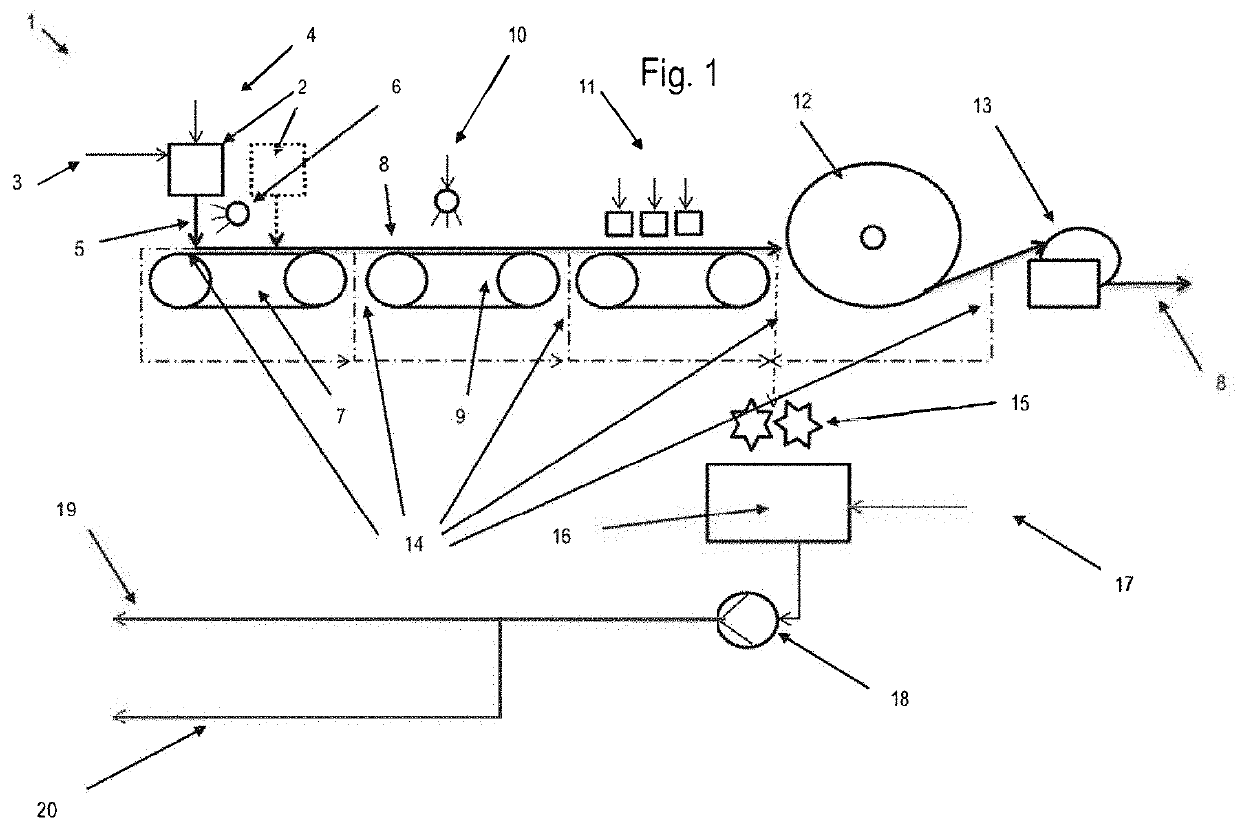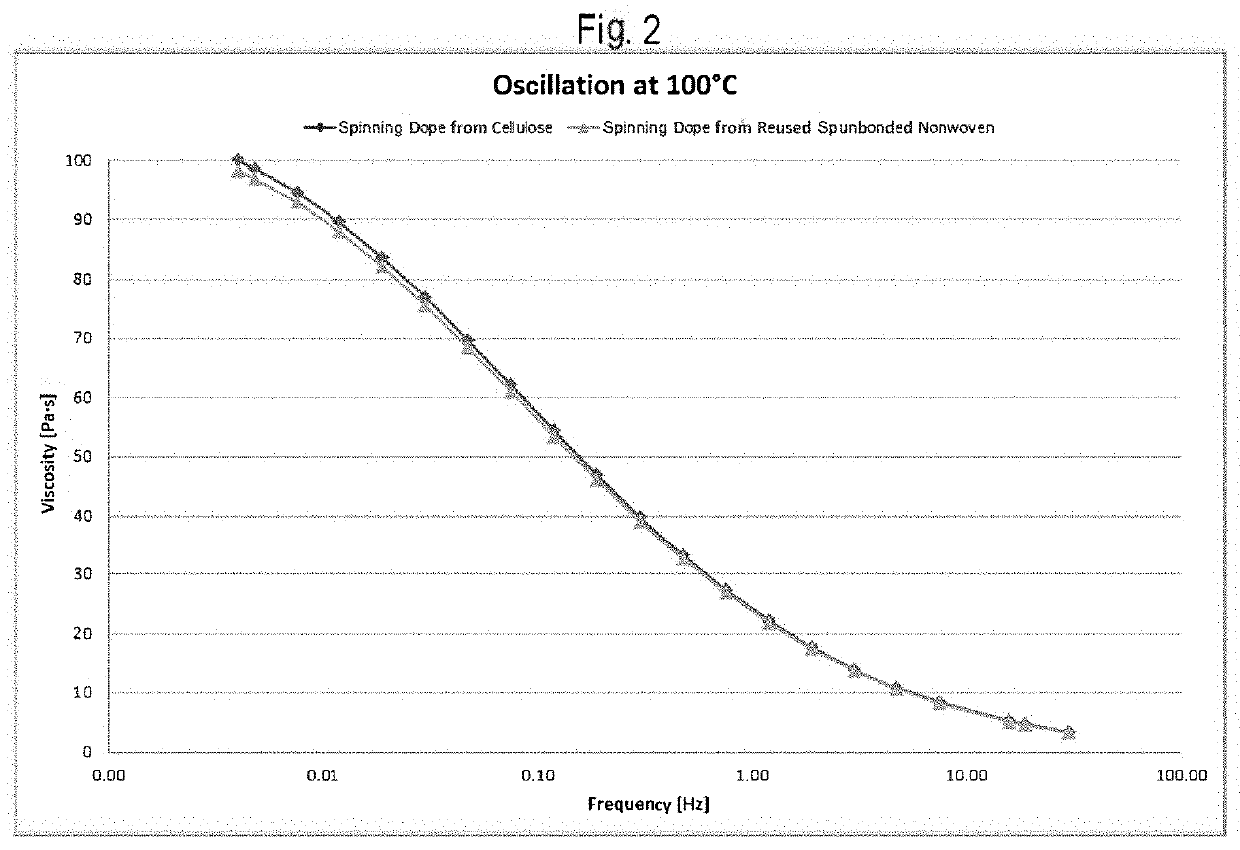Method for recovering solvent and cellulose in the production of cellulosic spun-bonded nonwoven fabrics
a cellulosic and non-woven technology, applied in the field of recovering solvent and cellulose, can solve the problems of high amount of solvent residue, loss of solvent during the further processing of spun-bonded non-woven fabrics, extruded filaments, etc., and achieve the effects of reducing the hydroentanglement rate, improving economic and environmental protection, and uniform product quality
- Summary
- Abstract
- Description
- Claims
- Application Information
AI Technical Summary
Benefits of technology
Problems solved by technology
Method used
Image
Examples
Embodiment Construction
[0046]In the present invention, a method and a plant are provided which make it possible to use the distances or, respectively, gaps between two plant parts or transport devices for discharging solvent-laden spunbonded nonwoven, to shred and to suspend the discharged spunbonded nonwoven and to either supply the produced suspension subsequently to solvent processing or to add it directly to the spinning dope production.
[0047]The method according to the invention enables an economically, environmentally, safety and operationally improved operation of a spunbonding plant for the production of cellulosic spunbonded nonwovens, since the spunbonded nonwoven can be discharged and adjustments can be made to downstream equipment without switching off the spinning dope production or the spinning system. Subsequently, the solvent can be recycled and contamination of downstream equipment can be prevented and, thus, the risk of corrosion and fire can be minimized.
[0048]For a better illustration ...
PUM
| Property | Measurement | Unit |
|---|---|---|
| Fraction | aaaaa | aaaaa |
| Area | aaaaa | aaaaa |
Abstract
Description
Claims
Application Information
 Login to View More
Login to View More - R&D
- Intellectual Property
- Life Sciences
- Materials
- Tech Scout
- Unparalleled Data Quality
- Higher Quality Content
- 60% Fewer Hallucinations
Browse by: Latest US Patents, China's latest patents, Technical Efficacy Thesaurus, Application Domain, Technology Topic, Popular Technical Reports.
© 2025 PatSnap. All rights reserved.Legal|Privacy policy|Modern Slavery Act Transparency Statement|Sitemap|About US| Contact US: help@patsnap.com


